Every modern man at least once in his life has encountered the problem of pests in the body.The quantity and variety of pests, which, in the literal sense of the word, cannot live without us, are simply huge.Pests in the human body use it as a source of food and habitats until they are completely exhausted, but without giving their presence.
The pests are tiny sizes or can grow in length several meters, but even in this case, their vital activity in the body cannot always be noticeable.A person, as a rule, does not even feel and not even know about his presence in himself.In the meantime, they are able to live in a human body for years and even decades, causing irreparable damage.
Pests in the human body are a serious danger and are a major threat to human health, as they violate the work of internal organs and systems, cause failure in the work of the immune system and interfere with the complete assimilation of useful substances, vitamins and minerals.In some cases, the situation is so severe that it can lead to death.
Types of relationships between organizations
In nature, there are different types of relationships between organisms that have a different effect on each other.
The impact of one species on another may have so neutral or positive and negative.
In addition, there are different combinations of such relationships.Distinguish:
- cohabitation.
- neutrality;
- antibiotic.
Cohabitation is a form of relationships between two organisms, both of which benefit.
The neutral is a type of biological connection, which consists of the habitation of two organisms in one soil, but at the same time they are not related to each other and do not directly affect each other.
Antibiotism is a competitive type of biological relationship in which one type of population restricts another, negatively affecting.One of the most negative types of antibiotism is parasitism.
Parasitism and parasites
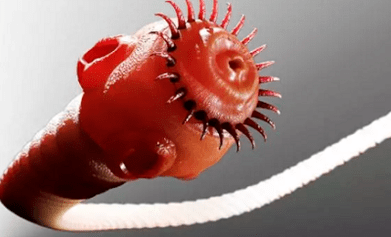
Parasitism is a form of antibiotic in which representatives of one species use the body of another species as a temporary or stable environmental environment and a source of nutrients.
Biological organisms living at the expense of another organism are called parasites.
Pests do not kill their owner, but for a long time they use it as a source of food and habitat.
Pests include:
- Parasitic worms.
- Pathogenic bacteria.
- protozoa;
- mushrooms;
- Viruses.
Hosting organizations can be:
- bacteria;
- protozoa;
- plants;
- animals;
- Human.
In the development process, pests go through several stages of egg growth and larvae in adults (sexually mature, invasive), which indicates their long lives and must change 2-3 owners.
Sorting of pests
All pests are divided into bonds and optional.
Oblige the parasites out of the host's body whether they die or are in inactive state.For example: viruses.They drive an exclusively parasitic way of life, that is, they are completely dependent on the owner and activate their activities within it.
Optional parasites lead a parasitic lifestyle, but if necessary, it can exist in a perfectly normal form in the external environment.For example: pathogenic mushrooms and bacteria.
By the nature of the relationship with the host body, they share:
- True parasites?
- Fake parasites.
- Super Parasites.
True parasites are the same pests for which a parasitic way of life is the only form of survival.However, there are parasites that can be either welding (fixed) and optional (time).For example: lice, fleas, intestinal helminths.
False parasites - voluntary living organisms, who, if they accidentally enter the body, are able to live in it for some time and harm it.For example: the larvae of a room fly into a person's intestines.
Super parasites are parasites that live in other pests.For example: bacteria and viruses in other parasitic insects living in other organisms.
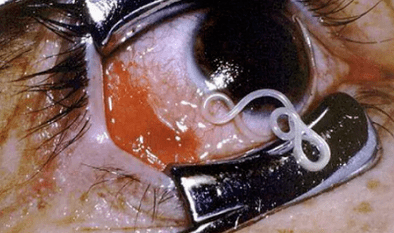
Depending on the duration of the interaction with the host's body, they discern:
- Fixed parasites.
- Temporary parasites.
Stable parasites are organisms that carry out their entire life cycle in the body - the owner, placing the larvae on it.For example: Ascarides, movies, lice.
Temporary parasites.Live and eat at the expense of the owner at a particular stage of development.For example: the larvae of a volt fly and an imago (adult insects)-in fleas and mosquitoes.
In place of the host body, the parasites are divided into:
- Ectoparasites;
- Endoparasites.
Estoparasites are organisms that live on the skin of the host's body.For example: lice, fleas, ticks.
Endoparasites are organisms that are in the host's body.Endoparasites are divided into:
- Internal parasites.
- tissue parasites.
- intracellular.
Intravenous pests are organisms found in cavities associated with the external environment, for example: Ascaris, Vlasov -it is in human intestines.
Fabric pests-one type of organisms located in closed cavities and tissues of the host's body, for example: for example, liver bacon, cystic movies.
Intracellular parasites are located in the cells of the body - the owner, for example: malaria platinum, toxoplasm.
In terms of distribution in the environment, parasites are:
- Curly, it meets everywhere.
- Tropical, which are commonly common in a warm, tropical climate.
According to biological and epidemiological characteristics, parasites are divided into:
- Geographically- These are parasites initially undergoing a development stage in the human body and then in the external environment (for example, earth).
- Biomedical- Pests in which the development cycle takes place not only in the human body but also in the organisms of other creatures.A person, as a rule, is the final owner, and sometimes intermediate.
- Contact HelminthsThey are separated from the host's body with already mature or half, as a result of which it is possible to repeat the infection or contamination of another person (self -treatment, rejuvenation).
How pests fall into the human body
There are many favorable factors that contribute to the entry of pests into the human body:

- dirty hands;
- animal hair;
- poorly cooked products (diet factor);
- Contact factor.
- transmissible;
- Percutant.
Dirty hands are the main source of infection with parasitization.There are several diseases called "dirty hands diseases".The worm larvae, which first fall into the skin of the hands, and then in the mouth, cause characteristic symptoms of the gastrointestinal tract.The transmission route of these infections is called stool.Thus, helminths with helminths of contact fall into our bodies.For example, Askarides eggs enter the human body through dirty hands, poorly washed vegetables, fruits, berries, green and also spread to flies.
Their animals and wool are a source of Askaridis and Blind with worms.For example, for a long time, which has fallen from the wool of the animal, it retains vitality (up to about 6 months) and, falling into carpets, things, bedding, children's toys and hands, penetrate the food.
Also, through wet breathing, dogs and cats are able to dissolve pest eggs at a distance of 3 - 5 meters.In addition, there are fleas on dog and cats wool, which also tolerate worms.
The nutritional method of infection with pests is performed:
- through poorly washed vegetables and fruits.
- badly cooked food (more often meat);
- Contaminated water.
For example, incorrectly cooked barbecue, crazy or homemade Lardi can infect a person with haircut and echinococcus and poorly cooked dry fish or caviar can cause rear and wide tape infection.
The contagious method of infection occurs using blood insects, for example: ticks, mosquitoes, lice, fleas, bugs.
Communication - The domestic course of infection is performed through an infected person or animal when it comes into contact or using common household items.
The method of infection by mental infection occurs during swimming in tanks or in contact with contaminated soil.The larvae penetrate the body through the mucosa or human skin during contacts with water or contaminated soil.
Characteristics of the device
Almost all pests are particularly adaptable to survival.There are several factors that contribute to their high vitality:
- A long life expectancy.For example, helminths have been living in the human body for years, and sometimes just as the owner lives.
- Eggs of helmets have been able to insist and not collapse in the external environment for decades.
- The stage of the development of the parasite also contributes to his life expectancy.It goes through all stages of growth, starting from the egg, continuing the larva and change of the owner in the event of a lack of nutrients.
- The ability of pests to cause a state of immunodeficiency to the owner, which allows you to penetrate pathogens from abroad, as well as inactive internal infections.
- The helminths that fall into a person's gastrointestinal tract produce anti -portraits, which allow them to pass their deaths, but at the same time violate the normal process of consumption and cause toxic - allergic reactions to their host: asthma, urticaria, dermatitis.
- The invasive ability of pests is linked to the exchange of genetic information during sexual reproduction, which leads to the stability of their heterogeneous population.
- The wide vitality of helminths in many habitats: soil, water, animals, plants.
- The lack of effective methods of immunocentrism, as parasites are able to suppress or modify the host's body's immune response.
How to identify pests in the body
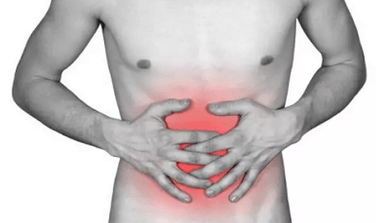
As a rule, a person raises such a question when his health is thoroughly undermined.It is common for a person to reject the problem at their initial stage until it evolves in serious form and will affect their well -being.
Since parasites are divided from the habitat into the body - the owner into endoparasites and ecopesites, the symptoms are divided into internally and externally.
Ecclesites are characterized by a particular activity, which is manifested by the following symptoms:
- Skin rashes?
- itch
- combustion;
- hyperemia;
- pain (if it was bite).
- The presence of a trauma in place of a bite.
The detection of endoparasites is much easier.The following actions are carried out for this:
- Optical identification (if there is an external penetration through the skin).
- Microscopic examination.
The discovery of ectoparasites is a difficult task, since in the process of evolution the "dependents" have been adapted to survival, and are concealed and without betraying themselves, carrying out devastating work on the host's body.After all, a person lives, for example, with worms from his appearance, and their stages of growth can take from several months to a decade.So how to determine the presence of pests in the body?
External and internal events
Since parasites differ in a long life expectancy and are actively multiplying in the human body, they cause symptoms that are long -term recurrent and chronic.
External events of pest activity include:
- skin rash;
- itch
- combustion;
- hyperemia;
- fever;
- Quincke's swelling.
It is important to know that the degree of allergies are dependent on many factors:
- Parasite location in the body.
- Pest contact with tissues and vital organs.
- the amount of toxins produced.
The following symptoms include violations in the body of the internal invasion:
- Disorders in the work of the gastrointestinal tract (nausea, diarrhea, belching).
- Weight fluctuations associated with the lack of nutrients and the reduction of appetite.
- Longing for sweets due to metabolic disorders and general weakening of the body.
- Chronic fatigue syndrome, which is manifested by general fatigue, drowsiness, in some cases insomnia, reduced concentration and memory.
- Stable headaches caused by the weakness of the body and toxicity.
- The grinding of teeth in a dream (Bruxism) is especially manifested in children.
- swelling of the limbs.
- Nervous disorders and mental disorders, since pests can cause depression and irritability.
- paroxysmal cough.
- muscles and joint pain.
- painful palm of the skin.
- Skin lesions (dermatitis, eczema, acne and acne).
It is especially important to know the general symptoms observed with intestinal parasitic invasion.
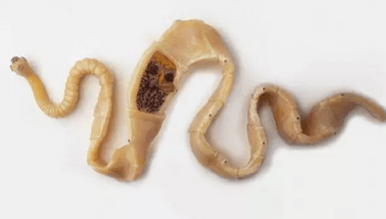
Violations on the digestive tract, which are manifested by the following symptoms:
- Intestinal cramps.
- Irritable bowel syndrome.
- inflation;
- constipation or diarrhea.
- Changing the color of feces.
- Itching in the anus.
- Optical detection of helmets.
- The presence of worms in the gag.
Since worms can reach significant sizes in the body, they are able to naturally complicate the progress of feces and violate the work of other organs, for example, bile ducts.
Pests can cause violations in the work of a particular instrument or system.
The most common violations are:
- Anemia.
- Damages of the central nervous system.
- Abscesses to the liver.
- Purulent inflammation of gall bladder and pancreas.
- Fruits in the work of immunity, until the development of autoimmune reactions.
- Disorders in respiratory function.
- Common diseases.
Diagnosis
All of the above symptoms cannot always accurately confirm the presence of pests in the body, as these symptoms can be observed with many diseases.
You can create the presence of pests in the human body when examining the feces.However, this method is unreliable because pest larvae cannot always be observed through a microscope or omit.In addition, not all pests put many eggs.
In order to detect pest larvae in the stools, it is necessary to last up to 8-10 times an analysis of stools.But if in this case the analysis has shown nothing, but the doctor has doubts, then several serological blood tests are prescribed, which will help detect helminth antibodies that appear in the blood a few weeks after infection with parasites.
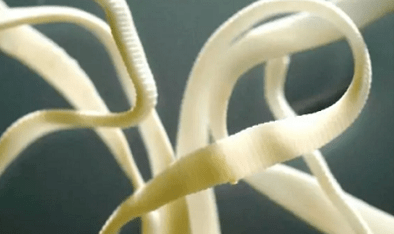
There are other methods to identify "dependent" people with the SO string test.A capsule string is inserted into the intestines through the nose and removed after four hours along with the samples taken.
Another method is a colonoscopy in which the expert considers the state of the inner surface of the colon using a specialist detector.
Experts have found that the most common parasites are elminths.In addition, they are all very viable and fertile and their goal is to destroy their master and to extract the maximum benefits for themselves.
How to remove parasites from the human body
It is difficult to get rid of pests, but it is possible.It is important to prioritize: It is necessary not only to know how to get rid of pests, but also to understand what the treatment process itself is.It takes place in three directions:
- The destruction of pests at all stages of existence.That is, it is necessary to destroy not only adults but also their larvae and eggs.
- Normalization of the work of all body organs and systems.
- Body restoration.
To satisfy all three of the above elements will help modern medicines based on the factories that the expert will prescribe.
Such medicines are modern medicines and have a specific therapeutic effect.The use of these medicines in the complex allows you to combine their therapeutic effect and have a wonderful effect.
The dosage and combination of medicines are performed on the basis of:
- stages of parasitic invasion;
- general condition of the patient;
- the availability of complications by a particular body.
- severity of the course of the disease.
The priority of anthelmintic drugs is based on:
- efficiency;
- safety;
- The likelihood of combining many drugs for the best therapeutic effect.
Treatment with folk remedies is a very effective way to get rid of pests.Most of the time, grass cleansing tea is used, which neutralizes the harmful effect of pests, cleanses the liver and gall bladder.
Prepare the tea as follows: Take a tablespoon of the following plants each: oak bark, buckthorn, worm, tansy.Then a tablespoon of a mixture of plants is poured with 500 ml of boiling water and left on a closed plate overnight.In the morning, on an empty stomach, 100 grams of cotton resulting are drunk.The treatment continues for two to three weeks.
Pumpkin seeds are also very effective in fighting pests.To get rid of the pests, 300 grams of pumpkin seeds are obtained, cleaned by the peel, but at the same time leave as transparent film as possible, surrounding the seeds.The seeds should be eaten in the morning on an empty stomach.This recipe eliminates not only the parasites but also improves the function of the intestines, stomach, liver and gall bladder.





















